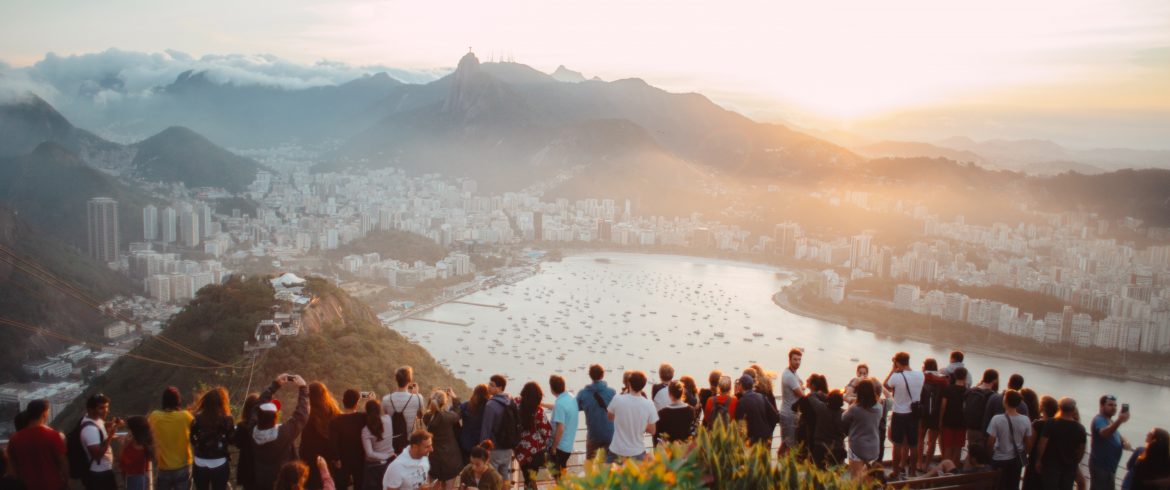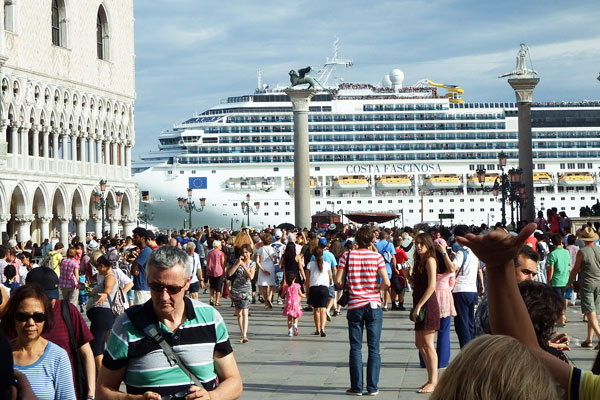Over-tourism: Causes and Consequences

Over-tourism is a growing global problem in many tourist destinations as they have become so overrun with tourists, and unable to cope with their popularity. Those are the places that everyone wants to see because they are “famous.” This type of mass tourism has caused pollution, the devastation of nature, and distress of local populations.
So what is over-tourism? According to the article “Over-tourism: Causes, Consequences and Solutions” by Alessia Framba, over-tourism is a neologism that indicates the overcrowding of tourists on a holiday destination. Over-tourism (or unsustainable tourism) refers to the idea of tourism disrespecting the place, nature, residents, and culture. As humans, we usually prefer the term “enough” to “under” or “over.” Similarly, tourist destinations and people who live there also prefer to have a limited number of tourists that respect them and that they can handle, and provide services for.
As someone who likes to travel, I also want to check out popular tourist destinations. However, I often change my mind, and think that I should avoid contributing to over-tourism by avoiding the crowds, traveling at off-peak times, and respecting the place, environment, its culture, and people. John F. Kenedy once said, “one person can make a difference, and everyone should try.” As I try to avoid contributing to over-tourism by traveling less and increasing the quality of travel, I can show others that I can do it, and they can do it too, and indicate the positive impacts of my action on others, and the environment.

A very large number of people focusing on a few tourist destinations in the world leads to the excessive presence of tourists. The cause of over-tourism is human activity. By this I mean tourists’ travel patterns and behaviors are irresponsible and unsustainable, which causes over-tourism. For instance, everyone wants to check out the famous movie scenes, travel on cruises, which bring large quantities around the seas, as well as to famous destinations. Destinations become overrun with a large number of tourists, and are unable to handle the massive influx of people at their small cities all at once. An example of this would be Venice, the city that only has less than one million inhabitants, but received 3.9 million foreign visitors in 2015, and recorded 1.6 million cruise passengers in 2016, even after the city actively implemented strategies to prevent over-tourism (“Over-tourism in European Destinations”). These large-scale tourist numbers have led to a ban on cruise ships, and a limit on visitor numbers inside the city walls.
Additionally, people choose the destination based on what they’ve seen on social media, and YouTube. Also, travel influencers are paid to promote destinations, services, or products associated with travel by leveraging their social media influence, which can possibly lead to large masses of people traveling to the same destinations. They travel without planning or thinking about the consequences. I agree with this idea of choosing where to travel based on the Internet. As I see videos and pictures of people checking in at beautiful places, I also want to check it out myself. However, before I start packing my bag, I carefully think and plan my trip, in order to prevent over-tourism. Thereby, I think this issue of over-tourism and unsustainable travel need to be addressed and prevented by the government, as well as the travelers.
According to the article “Is Over-tourism Overused? Understanding the Impact of Tourism in a City Context,” over-tourism is not a tourism-only problem, but it’s also caused by an overuse of the resources, infrastructure, or facilities of a destination. Each destination has their limited resources, facilities, etc. for its own residents and a small number of tourists. However, the increase in the number of visitors leads to an overuse of these resources and facilities, causing local cities running out of resources quickly and not being able to provide for tourism, or even its own residents. I agree with the idea of overusing resources and facilities, affecting the locals’ quality of life due prices of food rising, short-term rentals, an increase in water, electricity consumption, causing shortages, increasing air pollution, litter, and waste in destinations.
Along with the causes of over-tourism, there are the consequences of it, such as the destruction of natural ecosystems, increase in the amount of waste, escape of residents, etc. The excessive presence of tourists at popular natural destinations leads to deforestation, exploitation of the soil, and pollution. Specifically, a survey in 2016 indicates that 79 percent of Icelanders believed tourist pressure on Icelandic nature was too high. Just like nature, the destinations and people who live there are also affected by too much tourism. As the housing prices and rentals rise, small shops being replaced by tourist shops, and the inviolability of the cities, residents decide to escape from their cities. If I was them, I would’ve felt overwhelmed and wanted to escape as well.
Human activity of travel, their unsustainable travel patterns affect other human beings, their lives, homes, and cities. A lot of people aren’t even aware that there’s a tourism problem in many places. They continue traveling to the same destinations, negatively affecting the place, and its people. However despite the displeasure of overcrowding, most residents still recognize tourism’s contribution to the income and standard of living in the city. Nevertheless, it’s important to raise awareness on the dangers of over-tourism, plan, act wisely, and become a green traveler before it’s too late.
As its name suggests, this blog post is an analysis of the over-tourism. I think economic development is certainly a major cause for this issue, for it provide money for people’s travels. When more people go travel, the scenic spots could be crowded with people. The lack of choices of destination is also a reason. Many people are promoted with similar destinations, and this lead to large messes and concentrations. The over-tourism is harmful for both tourists and the destinations. As suggested in the pictures in this post, people can’t enjoy the scenery well with crowds of people in sight. The over-crowded situation could also harm the infrastructure of the destination.
ReplyDeleteI totally agree with your idea that "it’s important to raise awareness on the dangers of over-tourism, plan, act wisely, and become a green traveler before it’s too late". As a Chinese, I could tell how scary over-tourism is. The huge population leads to over-tourism not only inside the country but also abroad. During the "golden traveling weeks", a tourist can hardly see the beauty of the place because there are too many other tourists. What is left behind is trash and damages. However, it is actually very hard to avoid rush weeks because most people have the same holidays. A student cannot go travel during his or her school years, even though they know it will be very crowded in the summer. No one wants to visit a place with too many people, but the plan is always hard to make.
ReplyDeleteBefore reading this blog post I had not really heard much about over-tourism and I agree that awareness about this issue should be raised. It is important to respect the places you are traveling to and its inhabitants. I think many times when a destination is popular tourists think that they are helping it by visiting and spending their money there but as this blog post mentions that is not the case. Tourists also have to repeat the destination, its inhabitants, and their culture. I think doing so would actually increase your experience at that destination. Learning about the peoples culture would be a great learning experience in my opinion. We have to take care of earth so we can enjoy its beauty for longer and I think becoming a green traveler is a great way to start.
ReplyDelete